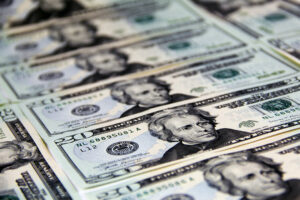By Aaron Michael C. Sy, Reporter
PHILIPPINE foreign direct investment (FDI) net inflows sank to an over four-year low in June amid lower placements across all instruments, the Bangko Sentral ng Pilipinas (BSP) reported on Tuesday.
The inflows fell by 29% to $394 million from $555 million a year ago, preliminary data from the BSP showed.
Month on month, net inflows dropped by 27.55% from $510 million in May.
June’s net inflow was the lowest level since the $314 million recorded in April 2020.
“The decline resulted from lower net inflows across all major FDI components,” the BSP said.
Nonresidents’ net investments in debt instruments declined by 30% year on year to $213 million in June from $304 million, central bank data showed. These consist mainly of intercompany borrowing or lending between foreign direct investors and their subsidiaries or affiliates in the Philippines.
Net investments in equity capital other than the reinvestment of earnings likewise went down by 33.2% to $74 million from $111 million a year ago.
Equity capital placements slid by 34.09% year on year to $87 million, while withdrawals dropped by 38.1% to $13 million.
Reinvestment of earnings also decreased by 23.4% to $107 million from $140 million a year ago, while investments in equity and investment fund shares dropped by 27.89% to $181 million.
By source, equity capital placements were mainly from Japan (47%), followed by the United States (15%), Sweden (14%) and Singapore (14%).
These were invested mainly in the manufacturing (48%), real estate (18%), wholesale and retail trade (16%) and financial and insurance (11%) sectors.
NET INFLOWS RISE IN FIRST HALFMeanwhile, in the first semester, FDI net inflows increased by 7.9% to $4.4 billion from $4.1 billion a year earlier, BSP data showed.
Investments in equity and investment fund shares rose by 32.7% year on year to $1.71 billion in the January-to-June period.
Net foreign investments in equity capital surged by 62% to $1.197 billion in the six-month period. Placements went up by 57.9% to $1.158 billion and withdrawals rose by 41.5% to $261 million.
These placements mostly came from the United Kingdom (52%), followed by Japan (30%) and the United States (7%), and were mostly invested in the manufacturing (77%) and real estate (10%) industries.
Meanwhile, net investments in debt instruments went down by 3.4% to $2.725 billion in the first semester from $2.821 billion a year ago.
Reinvestment of earnings also dropped by 6.7% to $514 million.
FDI net inflows slumped in June due to elevated interest rates, as the market at that time was still uncertain about the start of the monetary easing cycles of both the BSP and US Federal Reserve, Rizal Commercial Banking Corp. Chief Economist Michael L. Ricafort said in a Viber message.
The Monetary Board on Aug. 15 reduced its policy rate by 25 basis points (bps) to 6.25%, its first easing move in nearly four years. Prior to the cut, the BSP kept its policy rate at an over 17-year high of 6.5% for six straight meetings following cumulative hikes worth 450 bps between May 2022 and October 2023 to rein in inflation.
BSP Governor Eli M. Remolona, Jr. has said they could cut rates by another 25 bps within the year. The Monetary Board’s last two policy-setting meetings this year are on Oct. 17 and Dec. 19.
Meanwhile, the Fed is widely expected to begin its easing cycle at its Sept. 17-18 policy meeting, with markets pricing in a 25-bp cut at the review and 100 bps in reductions for this year. The US central bank has kept the federal fund target rate at 5.25%-5.5% range following increases worth 525 bps from March 2022 to July 2023.
Still, FDI inflows grew year on year in the six months ending June as the Philippines posted robust economic growth last quarter compared with other countries in the region, Mr. Ricafort said.
Philippine gross domestic product (GDP) expanded by 6.3% in the second quarter, bringing first-half growth to 6% and meeting the low end of the government’s 6-7% target for the year.
At 6.3%, the Philippines’ GDP growth was the second-fastest in the April-to-June period, only behind Vietnam (6.9%). It was ahead of Malaysia (5.8%), Indonesia (5%) and China (4.7%).
“For the coming months, further cuts in BSP and Fed rates amid the easing inflation trend would further reduce borrowing costs that would help spur greater global investments, business, and other economic activities worldwide, which would thereby help boost FDIs,” Mr. Ricafort said.
“We expect [FDIs] to get better as we have seen so far this July-August, particularly, as BSP did a rate cut within the period mentioned,” Union Bank of the Philippines, Inc. Chief Economist Ruben Carlo O. Asuncion said in a Viber message.
The central bank expects to end 2024 with $9.5 billion in FDI net inflows. In 2023, net inflows fell by 6.6% year on year to $8.9 billion.

